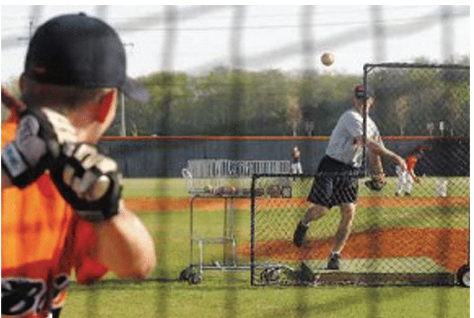
One of the rude awakenings of the season is when pitchers start throwing quality off speed pitches to batters. While coaches always want to ensure batters are crushing fastballs, hitters need to be able to handle the off-speed pitch. So what are some strategies and concepts players and coaches can use to make pitchers regret throwing soft stuff to hitters?
Let's first look at what pitchers are attempting to accomplish by throwing an off-speed pitch- disrupt the timing of the hitter. Pitchers want the foot to get down too early, the arms reaching for the ball, the lower half spinning- leading to weak contact (usually) to the pull side. Just as important as HOW to hit the breaking ball is WHEN (or not) to hit the breaking ball. Seeing at bats ended on soft contact on a 2-0 or 3-1 breaking ball is very frustrating. When a hitter has the count in their favor, make sure they aren't giving away swings by going after off-speed pitches simply because they are strikes.
Common strategies for hitting tend to not paint the whole picture. “Stay back on the ball” can still lead to guys spinning on pitches. “Hit it the other way” asks a batter to identify the breaking ball and change their swing on the fly and hit it to the opposite field.
It's important for hitters to understand that the 'foot getting down' does not launch the swing, the launch of the swing puts the foot down. Worrying about the foot getting down is like worrying about blinking. It's gonna happen. So help hitters understand if they need to extend the stride a bit or let the stride foot hover for a split-second extra it's perfectly OK.
This idea will also help hitters who tend to reach for breaking balls. Because the lower body is still driving the swing, the arms will naturally work a little bit later. I got this cue from another great coach named Jerry Brewer and it has done wonders for some of my hitters: saving the back knee for as long as needed. If the knee fires too early, it's going to take everything else with it. But, saving it until it's 'needed' creates a flexible timing window for hitters to do damage.
Now, lower body timing is not whole story. Another goal on breaking balls is not being so eager to "yank", which happens when hitters' hands pull off the ball from contact to follow through. This concept gives batters options – hands through the zone, hip delay, etc. No batter is the same, so providing them with options is usually a good idea.
Knowing some strategies to help hitters is great, but what about off the field? Rather than set up a curve ball machine or tell hitters I'm going to spin breaking balls in BP, we turn it into a timing challenge – after each swing, the batter has to call out whether they are early, late, or on time. This can be turned into a competition, i.e. the first batter to have five "on time" swings in the winner. Advanced hitters can also scoot forward or back after each "on time" swing.
I love this drill because too many kids think they need to change their swing to hit the breaking ball. If we can get them out of this mindset by simply challenging their timing, it goes a long way to them attacking off speed pitches better in game situations.